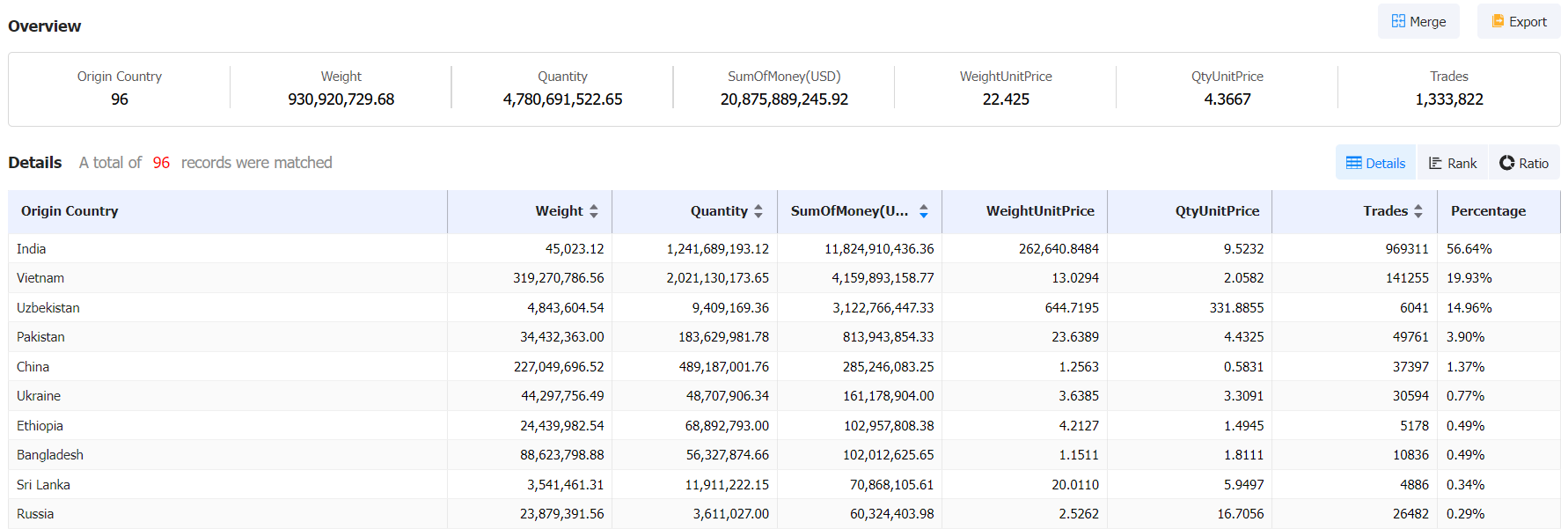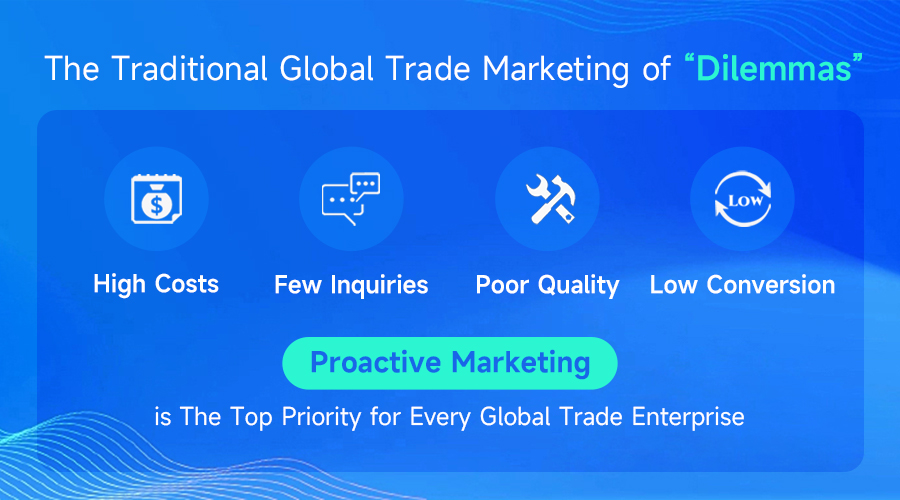 Export News
Export News
 27-12-2023
27-12-2023
The global fashion industry is a dynamic and ever-evolving sector where millions of garments are produced and distributed worldwide every day.
In recent years, the global garments industry has experienced rapid growth. This expansion is driven by various factors, including the increasing global demand for garments, rising per capita income of the middle class, and concerted government efforts to promote the development of the garments industry.
In 2023, the top five countries leading the global garments industry in terms of exports are:
1. India (56.64%, $118,249.1 Million)
2. Vietnam (19.93%, $41,598.93 Million)
3. Uzbekistan (14.96%, $31,227.66 Million)
4. Pakistan (3.9%, $8,139.44 Million)
5. China (1.37%, $2,852.46 Million)

These major participants in global garments exports attract buyers from around the world as they can produce high-quality garments at relatively affordable prices. In 2023, driven by labor and material cost dynamics, India's share of global garments production has increased, while China's production has decreased.
India stands out as one of the world's largest producers of garments. The country's textile and garments industry holds strong global appeal, with products showcasing exquisite craftsmanship throughout the value chain—from fibers, yarns, and fabrics to finished goods. The garments industry in India is a vital and vibrant sector of the country's economy, encompassing the manufacturing, design, and marketing of various garments and textiles for both domestic consumption and international exports.
In 2023, India takes the lead as the largest exporter of garments, accounting for 56.64% of the global market share with an export value of $118.24 billion. According to the latest Tendata customs data, key export destinations for Indian garments include Nepal (34.11%), Netherlands (24.33%), United States (8.61%), United Kingdom (6.35%), United Arab Emirates (5.85%), among others.
How can Importers/Exporters Proactively develop Customers?
The standards for developing customers for import and export enterprises can be measured from the following data dimensions: purchase volume, profit margin, payment terms, product styles and quality matching, long-term procurement stability, loyalty, procurement potential, communication guidance intensity, local brand influence, risk resistance, and corporate credit rating, etc. Collecting sufficient big data on high-quality customers and creating accurate "profiles" for them has become an indispensable choice for actively developing customers. (>>> Click to Apply for a Free Demo)
With precise customer "profiles" in hand, the next step is to proactively analyze and clarify the other party's needs. Customer development can follow the "5W+1H" principle: What (what does the customer want to purchase), Why (why do they want to purchase), When (when will the purchase take place), Where (from where to make the purchase), Who (who ultimately decides the purchase), and How much (what is the procurement budget). By addressing these six points with relevant questions in the communication process, progress can be made step by step, leading to the formulation of market and pricing strategies and reducing decision-making errors. (>>> Click to Apply for a Free Demo)

Category
Leave Message for Demo Request or Questions


 T-info
T-info T-discovery
T-discovery

 My
Tendata
My
Tendata Market Analysis
Market Analysis Customer
Development
Customer
Development Competitor
Monitoring
Competitor
Monitoring Customer Relationship
Customer Relationship





































































































































